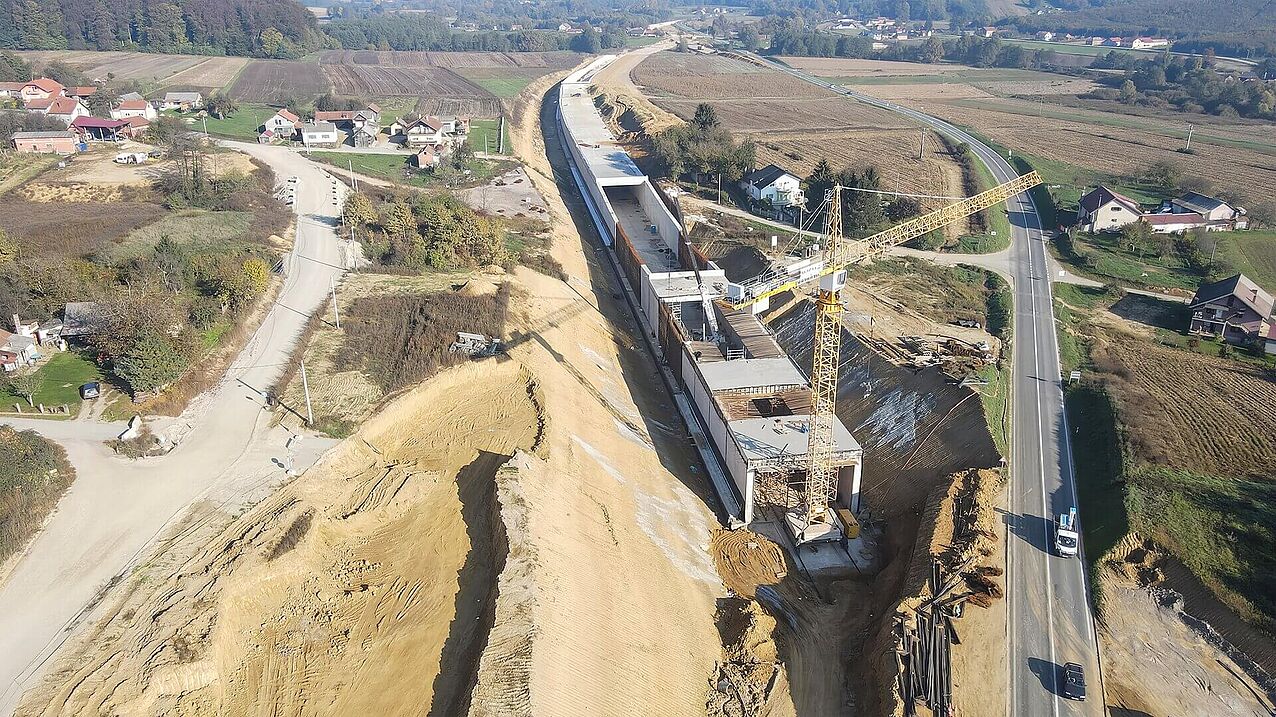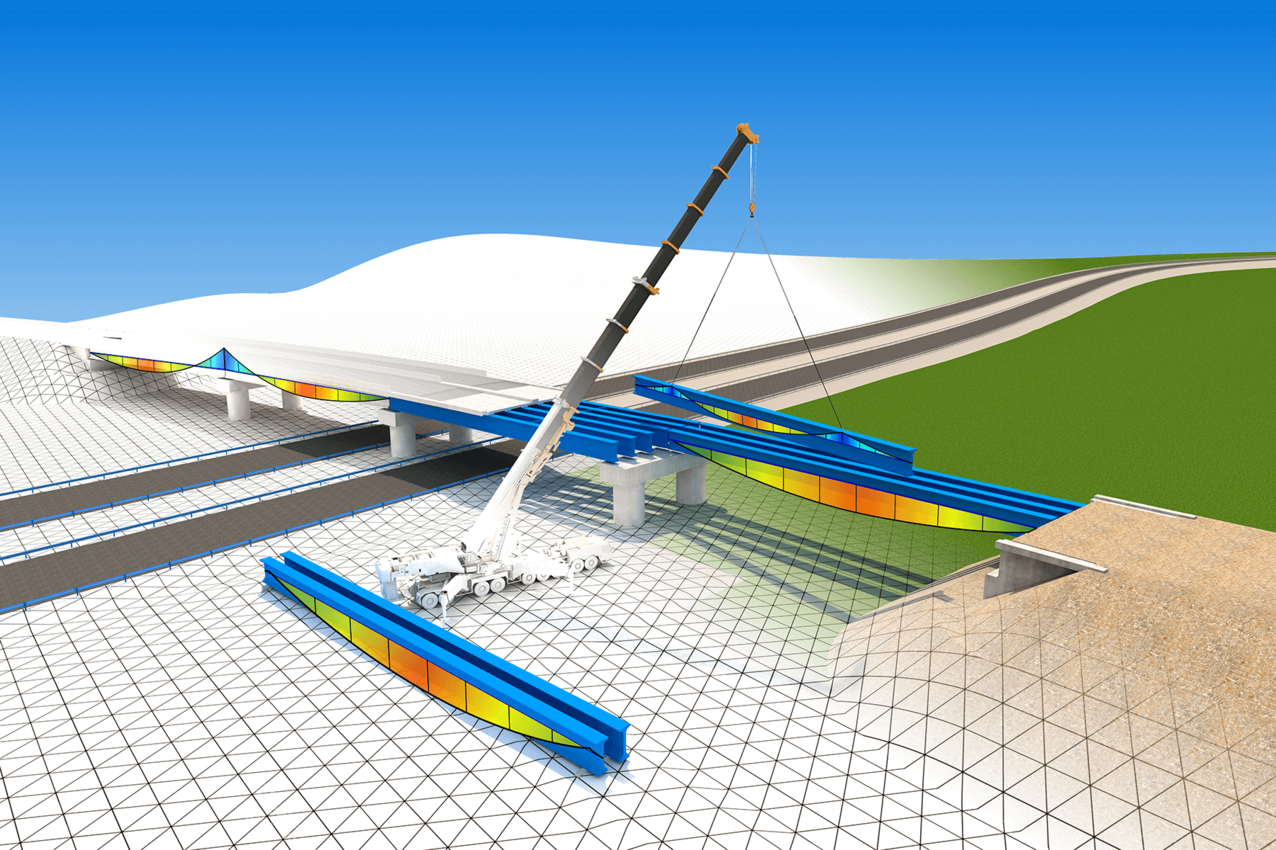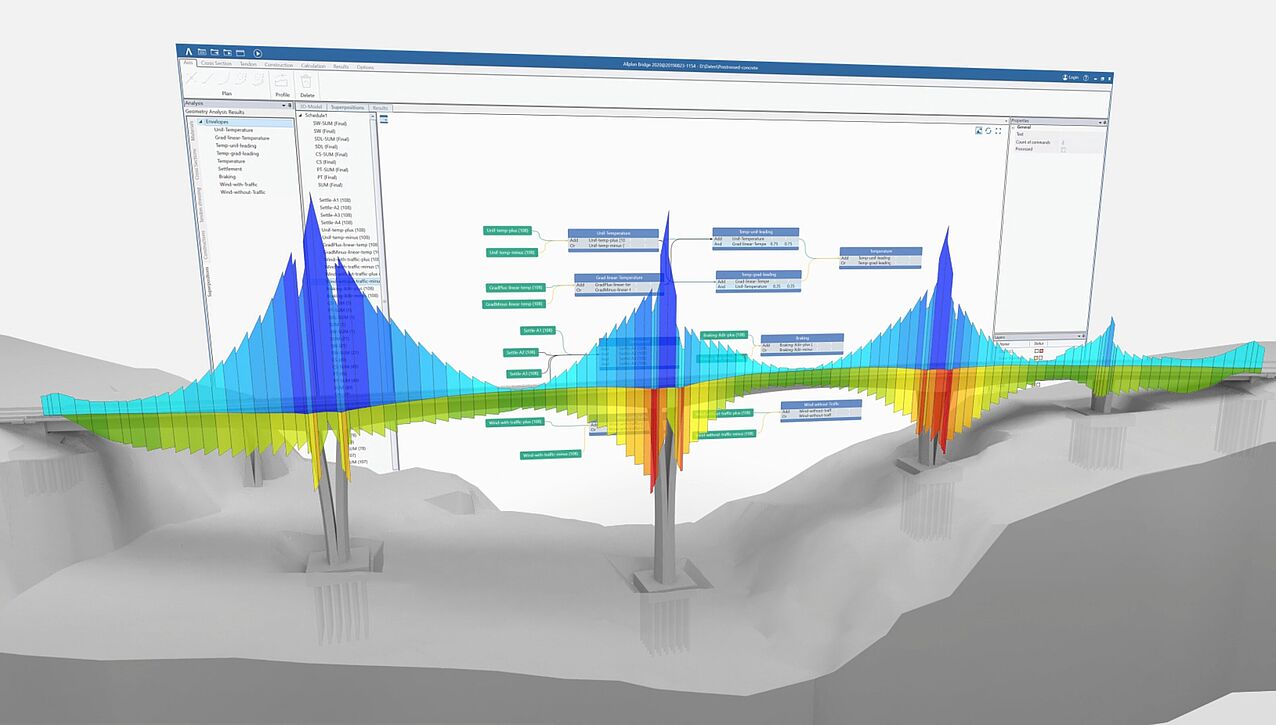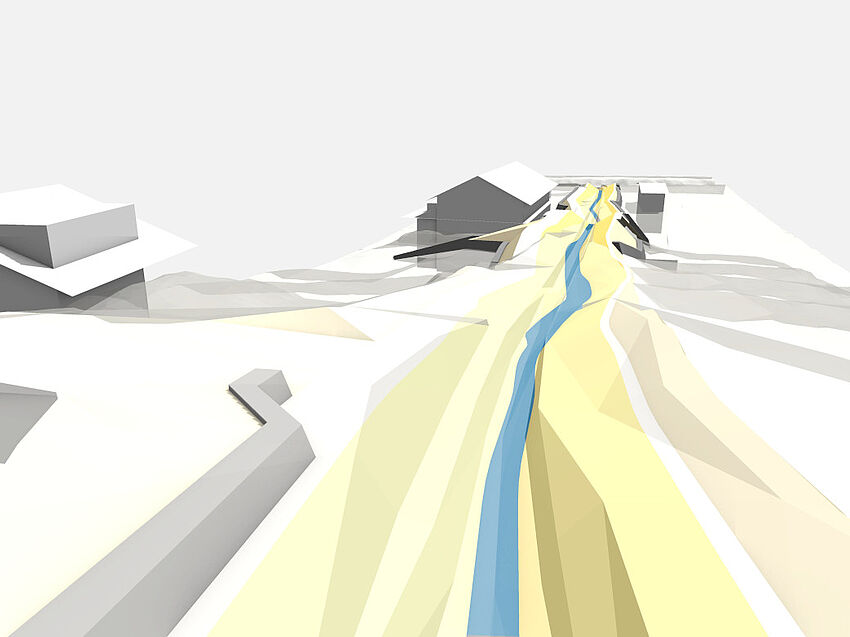Better Precast Girder Bridge Design with ALLPLAN: A Complete Workflow Solution
Gregor Strekelj, Product Manager Infrastructure at ALLPLAN, explains the name change and how it reflects ALLPLAN’s expanded commitment to infrastructure design.
ALLPLAN Bridge has recently rebranded as ALLPLAN Civil. Why? The aim is to reflect an expanded commitment to all facets of infrastructure design, empowering users with broader functionality to meet the demands of modern civil engineering. Gregor Strekelj, ALLPLAN’s Product Manager for Infrastructure, explains how the update provides users with the flexibility to tackle everything from tunnels and retaining walls to complex road networks. Keep reading to explore how ALLPLAN Civil infrastructure design software can enhance your capabilities to match the diverse needs of today's infrastructure projects.
The Rationale Behind the Name Change
ALLPLAN Bridge has become a trusted tool for bridge designers, known for its precision and adaptability. However, with each release, we advanced the modeling techniques that allow users to design not only bridges but diverse civil structures – from retaining walls to tunnels, and even complex multi-structure projects like integrated road networks. This expansion in functionality naturally called for a new name that better reflects the breadth of what the software can achieve. By rebranding, we’ve let our users know that they can seamlessly design, analyze, and adapt projects across the entire civil engineering landscape. The Allplan Bridge functionality, now called Civil, is available in two editions, Ultimate, where the complete parametric modeling is available and Allplan Civil, representing the highest edition, including the integrated structural analysis.

ALLPLAN’s Enhanced Modeling Techniques
Users have access to a suite of advanced modeling techniques that go beyond traditional bridge design, allowing for flexibility and precision across diverse infrastructure projects. This flexibility is achieved through the evolution of our parametric modeling techniques, which I like to categorize into three core groups: Axis Based Modeling (Cross-Section Extrusion), Polygonised Modeling, and Free-Parametric Modeling, each designed to accommodate the unique demands of different civil structures or their parts.
Axis Based Modeling (Cross-Section Extrusion)
This technique, introduced in the initial release, involves defining a cross-section parametrically and extruding it along a true road axis with absolute precision. By allowing parameters in the cross-section to vary according to tables or formulas, this method empowers our users to create complex shapes aligned with the axis, suitable for structures such as retaining walls, tunnels, and vertically oriented elements like piers.
Polygonised Modeling Method
Known for its versatility, this technique uses "link-girders" (straight 3D elements between two 3D points) to build structures like precast girder bridges. By setting these points relative to existing structures, such as piers, users can adjust the geometry to fit unique project layouts. Users can model complex layouts where adjustments to one element automatically updates others, ensuring consistency in multi-element projects.
Free-Parametric Modeling
This technique is ideal for projects that need unique, non-standardized elements. Using “prism elements” defined by cross-section and thickness, users can create a wide variety of shapes and combine them using Boolean operations.
Of course, all the techniques can be mixed and matched within a single project, allowing users to adopt a hybrid approach tailored to the specific challenges of each infrastructure design.
New Workflows for Precast and Parametric Reinforcement
Over the past year, we’ve also focused on creating streamlined processes specifically designed for precast girder bridges and parametric reinforcement – both essential in modern infrastructure projects.
By offering a complete workflow, we’ve made it easier for users to conduct global and local analyses, ensuring accuracy in design and safety throughout the construction process. For example, with our new precast girder bridge workflow, we ensure that our users can manage every stage of a girder’s journey, from initial casting to final placement. Now, users can simulate each phase, including critical stages like lifting, transport, and storage, right up to the girder’s final position on the bridge.

Parametric reinforcement was another area we knew would be transformative. Reinforcement design, when integrated parametrically, not only saves time but also improves precision. With our parametric reinforcement link, users can easily model various reinforcement shapes within a BIM environment. By linking this to ALLPLAN’s PythonParts technology, we’ve simplified the process, enabling users to create reinforcement models directly within ALLPLAN Civil, and then carry out code checks and adjustments as needed. Furthermore, this integration is bidirectional, meaning any modifications to reinforcement within the detailing process are reflected in the analysis model, ensuring seamless coordination between detailing and analysis.
Enhanced Structural Analysis
A comprehensive design environment is vital for today’s infrastructure projects, as even small adjustments can impact the entire schedule. So, one of our top priorities was to enhance the software’s capabilities in structural analysis and to create stronger, more seamless integrations with other essential tools in the ALLPLAN suite.
Our new structural analysis tools are purpose-built for bridge engineering. By integrating these tools directly into the design-to-build workflow, we’ve empowered users to conduct detailed structural analysis without leaving the software. This integration enables users to perform a full range of analyses for bridges and other civil structures, ensuring both the efficiency and reliability of their designs. We’ve also made it easy for users to visualize these structural checks within the 3D model, allowing for immediate feedback and adjustments where needed.

The recent mergers with SCIA and FRILO have brought additional advantages to ALLPLAN Civil users, particularly with the inclusion of SCIA Ultimate. SCIA’s powerful capabilities complement ALLPLAN Civil’s parametric modeling tools, and now, with our automated AutoConverter, users can create analytical models directly from the ALLPLAN model. This link means any modifications to the analytical model can be communicated to the project team and the geometrical model can be subsequently updated, reducing errors, saving time, and ultimately improving project quality.
Future Vision and Ongoing Commitment
Looking forward, our vision for ALLPLAN Civil remains centered on empowering engineers to handle the complexities of modern infrastructure projects with confidence and precision. The shift to ALLPLAN Civil is more than just a name change – it’s a reflection of this vision. Civil engineering is evolving, and so are we. Our goal is to stay ahead of this evolution, while equipping engineers with the tools to shape our built environment with resilience and ingenuity.




